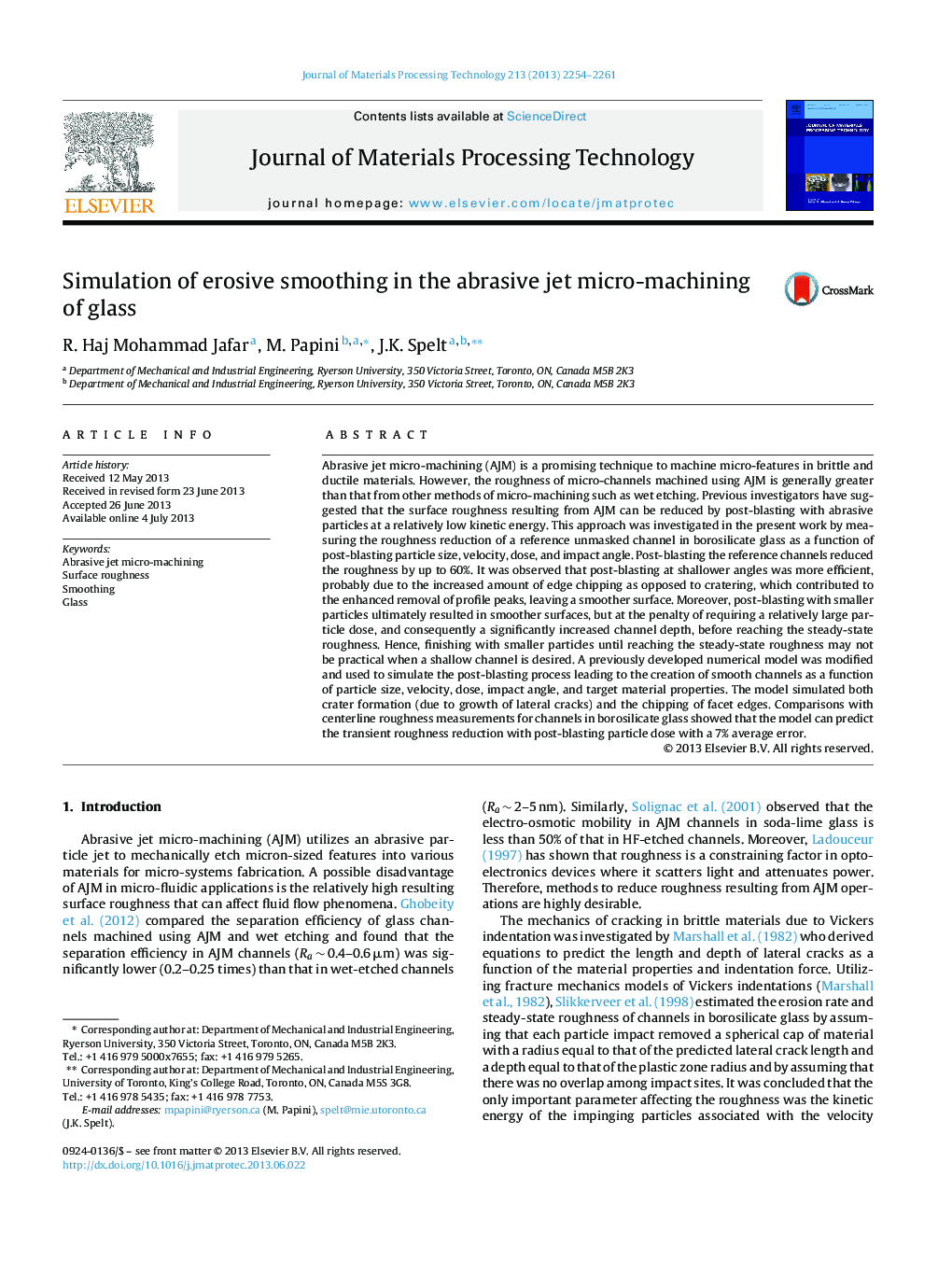| کد مقاله | کد نشریه | سال انتشار | مقاله انگلیسی | نسخه تمام متن |
|---|---|---|---|---|
| 10418342 | 902744 | 2013 | 8 صفحه PDF | دانلود رایگان |
عنوان انگلیسی مقاله ISI
Simulation of erosive smoothing in the abrasive jet micro-machining of glass
ترجمه فارسی عنوان
شبیه سازی صاف کردن فرسایش در جت میکرو ماشینکاری شیشه ای ساینده
دانلود مقاله + سفارش ترجمه
دانلود مقاله ISI انگلیسی
رایگان برای ایرانیان
کلمات کلیدی
میکرو ماشینکاری ساینده جت، زبری سطح، صاف کردن شیشه،
موضوعات مرتبط
مهندسی و علوم پایه
سایر رشته های مهندسی
مهندسی صنعتی و تولید
چکیده انگلیسی
Abrasive jet micro-machining (AJM) is a promising technique to machine micro-features in brittle and ductile materials. However, the roughness of micro-channels machined using AJM is generally greater than that from other methods of micro-machining such as wet etching. Previous investigators have suggested that the surface roughness resulting from AJM can be reduced by post-blasting with abrasive particles at a relatively low kinetic energy. This approach was investigated in the present work by measuring the roughness reduction of a reference unmasked channel in borosilicate glass as a function of post-blasting particle size, velocity, dose, and impact angle. Post-blasting the reference channels reduced the roughness by up to 60%. It was observed that post-blasting at shallower angles was more efficient, probably due to the increased amount of edge chipping as opposed to cratering, which contributed to the enhanced removal of profile peaks, leaving a smoother surface. Moreover, post-blasting with smaller particles ultimately resulted in smoother surfaces, but at the penalty of requiring a relatively large particle dose, and consequently a significantly increased channel depth, before reaching the steady-state roughness. Hence, finishing with smaller particles until reaching the steady-state roughness may not be practical when a shallow channel is desired. A previously developed numerical model was modified and used to simulate the post-blasting process leading to the creation of smooth channels as a function of particle size, velocity, dose, impact angle, and target material properties. The model simulated both crater formation (due to growth of lateral cracks) and the chipping of facet edges. Comparisons with centerline roughness measurements for channels in borosilicate glass showed that the model can predict the transient roughness reduction with post-blasting particle dose with a 7% average error.
ناشر
Database: Elsevier - ScienceDirect (ساینس دایرکت)
Journal: Journal of Materials Processing Technology - Volume 213, Issue 12, December 2013, Pages 2254-2261
Journal: Journal of Materials Processing Technology - Volume 213, Issue 12, December 2013, Pages 2254-2261
نویسندگان
R. Haj Mohammad Jafar, M. Papini, J.K. Spelt,
